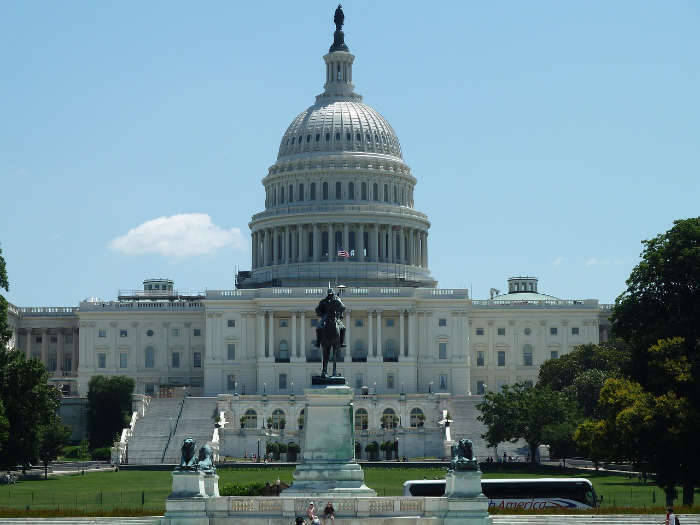Most Gerrymandered States 2025
Among the most Gerrymandered
State | Among the most Gerrymandered 2024↓ | Efficiency Gap (Michigan State University) 2024 | Party Favored 2024 | Party Favored | Princeton Redistricting Report Card 2021 | |
|---|---|---|---|---|---|---|
| California | 52 | -3.75 | Democrat | B | ||
| Texas | 38 | 2.26 | Republican | Republican | F | |
| Florida | 28 | 3.85 | Republican | F | ||
| New York | 26 | -0.91 | Democrat | A | ||
| Illinois | 17 | -2.67 | Democrat | F | ||
| Pennsylvania | 17 | 0.48 | Republican | Republican | B | |
| Ohio | 15 | 1.6 | Republican | Republican | D | |
| Georgia | 14 | 1.56 | Republican | F | ||
| North Carolina | 14 | 3.25 | Republican | Republican | ||
| Michigan | 13 | -0.16 | Democrat | A | ||
| New Jersey | 12 | -1.86 | Democrat | A | ||
| Virginia | 11 | -0.14 | Democrat | A | ||
| Washington | 10 | -0.09 | Democrat | A | ||
| Arizona | 9 | 0.77 | Republican | A | ||
| Indiana | 9 | 1.2 | Republican | A | ||
| Massachusetts | 9 | -1.32 | Democrat | A | ||
| Tennessee | 9 | 1.3 | Republican | F | ||
| Colorado | 8 | -0.14 | Democrat | A | ||
| Maryland | 8 | -0.45 | Democrat | Democrat | B | |
| Minnesota | 8 | none | A | |||
| Missouri | 8 | 1.08 | Republican | A | ||
| Wisconsin | 8 | 1.53 | Republican | Republican | F | |
| Alabama | 7 | -0.1 | Democrat | A | ||
| South Carolina | 7 | 1.53 | Republican | F | ||
| Kentucky | 6 | 0.49 | Republican | Republican | A | |
| Louisiana | 6 | -0.02 | Democrat | Republican | F | |
| Oregon | 6 | -0.31 | Democrat | D | ||
| Connecticut | 5 | -1.23 | Democrat | A | ||
| Oklahoma | 5 | 0.87 | Republican | C | ||
| Arkansas | 4 | 0.81 | Republican | Republican | C | |
| Iowa | 4 | 0.97 | Republican | B | ||
| Kansas | 4 | 0.59 | Republican | F | ||
| Mississippi | 4 | 0.51 | Republican | C | ||
| Nevada | 4 | -0.86 | Democrat | F | ||
| Utah | 4 | 0.69 | Republican | Republican | F | |
| Nebraska | 3 | 0.32 | Republican | A | ||
| New Mexico | 3 | -1.09 | Democrat | D | ||
| Hawaii | 2 | -0.25 | Democrat | A | ||
| Idaho | 2 | 0.35 | Republican | A | ||
| Maine | 2 | 0.05 | Republican | B | ||
| Montana | 2 | 0.48 | Republican | A | ||
| New Hampshire | 2 | -0.05 | Democrat | B | ||
| Rhode Island | 2 | -0.56 | Democrat | A | ||
| West Virginia | 2 | 0.16 | Republican | Republican | ||
| Alaska | Ins | |||||
| North Dakota | Ins | |||||
| Vermont | Ins |
- Maps adjusted in 2025 have not yet been fully analyzed by sources and are not yet reflected in the data shown.
- In many states, maps drawn after the 2020 census are mired in legal challenges and may or may not be in effect.
- Ordinarily, voting maps are updated and redrawn every ten years, following the release of updated census data (the census takes place at the start of each decade (2010, 2020, 2030 …). However, redistricting may occur outside of this schedule. One notable example is Texas’ 2025 redistricting, which was undertaken to ensure more Republican candidates were elected to the US House of Representatives, and which triggered redistricting efforts in several additional states, both liberal and conservative.
- All data shown are subject to change based upon additional updates and the outcome of legal challenges.
- The Michigan State University (MSU) Institute for Public Policy and Social Research evaluates the fairness/gerrymanderedness of an electoral map using four distinct statistical methods:
-
- “Efficency Gap” rule. The difference between the two parties’ seat-shares should be twice their vote-share difference. For example, if one party gets 60% of the vote and the other gets 40% (a 20% vote-share difference), they should split seats 70%-30% (a 40% seat-share difference).
-
- “Quadratic” rule. In this calculation of fairness, the minority party gets seat-share equal to twice the mathematical square of its vote-share. For example, if one party gets 60% of the vote, and the other party gets 40%, the second party should get 2*(40%)(40%)=2(16%) = 32% of the seats and thus the majority one should get 68% of the seats.
-
- “Cubic” rule. Seat-shares follow a more complicated cubic function of statewide vote-share, one that fits the historical pattern well. In particular, the ratio of seat shares (one party’s seat-share divided by other party’s seat-share) should be the cube of their ratio of vote-shares.
-
- “Jurisdictional” rule. A party should win seats in proportion to the population in jurisdictions (such as counties and cities) in which that party won more votes than any other party.
- In all four MSU data indicators, positive numbers denote an advantage for Republican canditates and negative numbers for the Democratic party. The last two columns indicate the number of seats each party would get under the maps used in the 2024 congressional election.
- Princeton University’s Gerrymandering Project conducts nonpartisan analysis to understand and eliminate partisan gerrymandering at a state-by-state level.
- Princeton’s report card gives an overall letter grade as well as separate grades for congressional, senate, house, and combined senate-house/unicameral districting. Scores for states with unicameral or combined districts will be displayed in both the Senate and House columns.
- Princeton report card letter grades correspond to the following values: A: Good, B: Better than average with some bias, C: Average, D/F: Poor, and Ins: Insufficient Data.
- Not every state in which the proportion of Rep/Dem representives differs from the Rep/Dem makeup of the population is gerrymandered. For example, Maryland is roughly 60% Democratic, but its representatives are often 100% Democratic. However, the state is not gerrymandered because both democrats and republicans are evenly spread across the state, making it impossible to draw districts that favor the Republican minority.
Gerrymandering is defined as setting boundaries in electoral districts in order to give a political party an advantage. Redistricting is something that occurs in all states about every decade. While this is seen as a political exercise, in some instances, state legislators and governors control the redistricting and can give their political party an advantage over their opponents.
Gerrymandering first occurred when minorities were given the right to vote. Legislative bodies used gerrymandering to ensure that the political power of these voters was diminished. Today, gerrymandering may occur for various reasons, although there have been proposals for ways to prevent this from occurring. These proposals include hiring commissions for redistricting or putting alternative voting systems into place.
In some states, this practice is more common than in others. The most gerrymandered states in the U.S. include:
- North Carolina: Has used Districts 1 and 12 for minority voters.
- Maryland: Uses broken districts to give an advantage to Democrats.
- Pennsylvania: Divides its major urban areas among other districts.
- Kentucky: Places urban populations in rural districts.
- Louisiana: Combined Baton Rouge and New Orleans into one district to minimize Democratic votes.
- Utah: Divides Salt Lake City into surrounding rural districts.
- Texas: Has tried to propose districts that would unfairly affect minority voters.
- Arkansas: Has drawn district boundaries to balance out city voters with rural voters.
- Ohio: Unfairly distributed districts in a partisan way.
Sources
- Partisan Advantage Tracker - Michigan State University Institute for Public Policy and Social Research
- Gerrymandering Project - Princeton
- The Worst 10 Gerrymanders Ever
- Redistricting plans in 50 states, graded (correctly)
- The Top 10 Most Gerrymandered States in America - Medium
- The Most Gerrymandered States Ranked by Efficiency Gap and Seat Advantage - Element 84
- Gerrymandering Explained - Brennan Center for Justice
- Congressional mapmakers receive "F" grade in five states - Axios
- Wisconsin is the most gerrymandered state in the country. The race for Wisconsin Supreme Court could change that. - Recombobulation Area
- Texas May Have The Worst Gerrymander In The Country - FiveThirtyEight
- Gerrymandering in the United States - Wiki
- What Redistricting Looks Like In Every State - FiveThirtyEight
- Redsistricting the Nation - Azavea.com



















